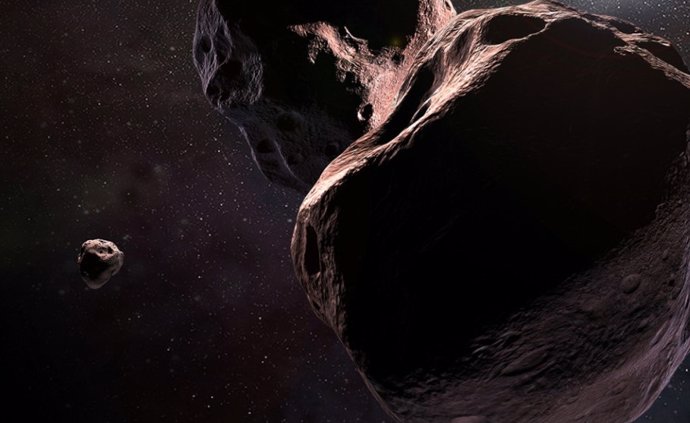Kuiper Belt Objects – NASA/JOHNS HOPKINS UNIVERSITY
Nov. 4 () –
A study published in Nature Astronomy challenges conventional science on the formation and stability of pairs of objects in orbit in the Kuiper Belt beyond the planet Neptune.
Nearly a third of all objects in the Kuiper Belt orbit each other, similar to the way the Earth and Moon interact. But in one region of the Kuiper Belt, these objects orbiting together have approximately the same mass, and a small number are also very far apart. This causes great instability, said lead author Hunter Campbell, a graduate of the University of Oklahoma, where the research was conducted.
The senior scientist at Planetary Science Institute (PSI) Nathan Kaib was a co-author of this article and helped conceive the project and assisted with the development of the simulation software.
The existence, formation, history and evolution of these widely separated, co-orbiting objects have been the subject of previous research. Many have hypothesized that collisions with smaller bodies alter the orbits of the paired bodies and cause one of them to migrate farther, but the team demonstrated a different hypothesis.
Gravitational interactions are an equal, if not stronger, factor in the long-term stability of these objects, they found. A large Kuiper Belt body is more likely to pass near two objects orbiting together and that their gravity distances one from the other.
Before this research, it was assumed that these widely separated bodies formed as they are now and simply survived the 4 billion years of existence of the Solar System. This work has shown that systems orbiting together could have started out with much narrower orbits. and have widened thanks to the gravitational attraction of the large bodies that pass through there.
“The fact that these ultrawide binary systems could have formed relatively recently is most surprising to me, since it has generally been assumed that they are as old as the Solar System,” Kaib said. in a statement.
These simulations are the first step in making potentially important future discoveries.
“Next, it would be great to see if impacts with small Kuiper Belt objects change or accelerate the binary widening process. In this paper, we only simulate close encounters in which gravitational interactions widen binary systems, but we do not simulate physical collisions between bodies.
Other future research could help scientists understand how the Kuiper Belt migrated to its current position, for example, and how that migration affected the movement of the outer planets Jupiter, Saturn, Uranus and Neptune throughout history.













![[Img #74674]](https://thelatestnews.world/wp-content/uploads/2024/12/Santiago-Ramon-y-Cajal-The-promoter-of-modern-neuroscience-300x200.jpg)
Add Comment